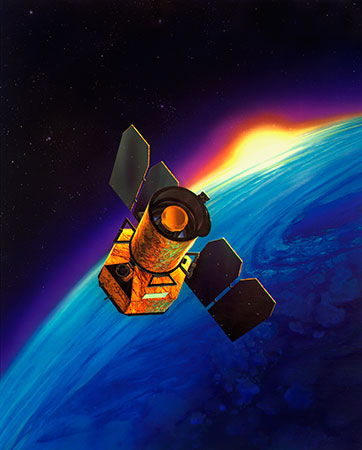GALEX Image

The Galaxy Evolution Explorer
The Galaxy Evolution Explorer was launched on April 28, 2003. Its mission is to study the shape, brightness, size and distance of galaxies across 10 billion years of cosmic history. The 50-centimeter-diameter (19.7-inch) telescope onboard the Galaxy Evolution Explorer sweeps the skies in search of ultraviolet-light sources.
Ultraviolet is light from the higher end of the electromagnetic spectrum, just above visible light in frequency, but below X-rays and gamma rays. While a small amount of ultraviolet penetrates Earth's atmosphere, causing sunburn, the Galaxy Evolution Explorer observes those ultraviolet frequencies that can only be seen from space.
The Galaxy Evolution Explorer mission is led by the California Institute of Technology, Pasadena, Calif., which is also responsible for science operations and data analysis. NASA's Jet Propulsion Laboratory, Pasadena, Calif., a division of Caltech, manages the mission and built the science instrument. The mission was developed under NASA's Explorers Program, managed by the Goddard Space Flight Center, Greenbelt, Md. South Korea and France are the international partners in the mission.
Credit: NASA/JPL-Caltech
Release Date
December 21, 2004
Download Options
- Full Resolution TIFF [2907x3614, 21 MB]
- Full Resolution JPEG [2907x3614, 9.5 MB]
- Screen Resolution JPEG [362x450, 36 KB]